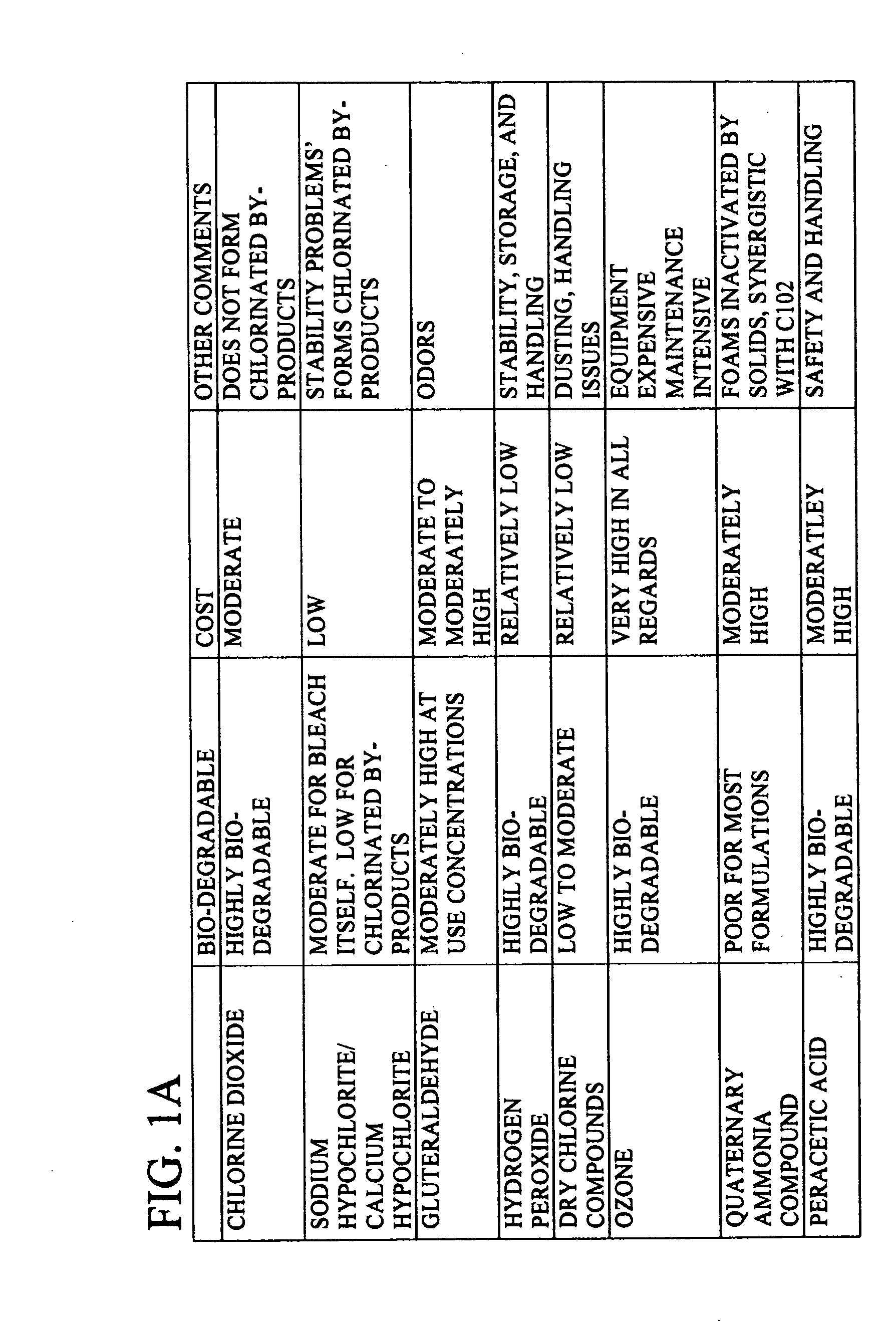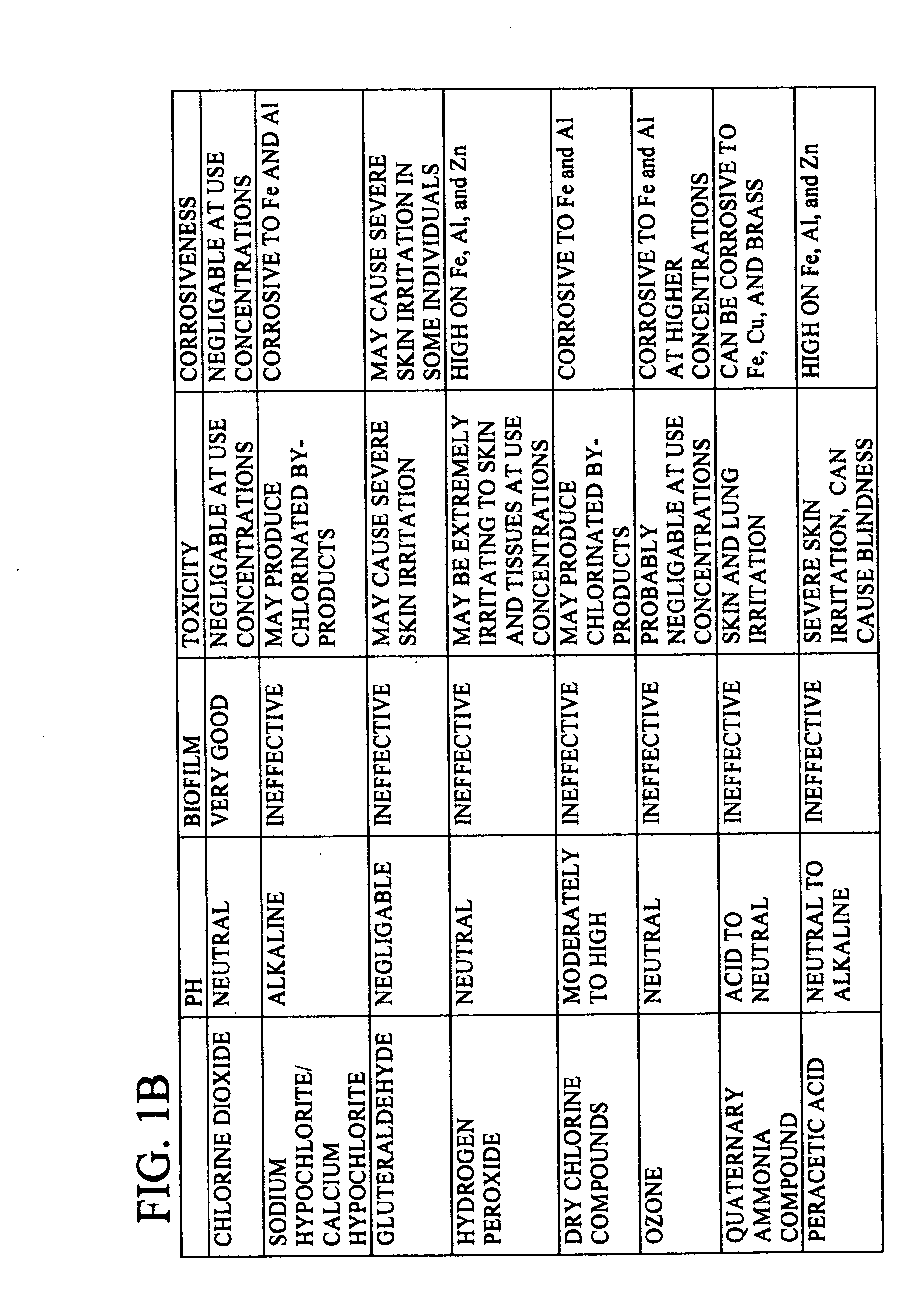Methods, apparatus, and compositions for controlling organisms in ballast water
a ballast water and organism technology, applied in the nature of treatment water, water/sewage treatment by oxidation, vessel construction, etc., can solve the problems of increasing energy costs, dangerous and sometimes impossible exchange of ballast water on the high seas, and contaminating coastal ecosystems and harbors
- Summary
- Abstract
- Description
- Claims
- Application Information
AI Technical Summary
Problems solved by technology
Method used
Image
Examples
Embodiment Construction
[0026] The present invention provides methods, apparatuses, and computer systems for treating, monitoring, and controlling the concentration of a biocide in ballast water. In general, the ballast water treatment system of the present invention uses a biocide (e.g. chlorine dioxide) to treat the ballast water for unwanted and potentially harmful organisms. The ballast water treatment system facilitates treating the ballast water with a biocide, controlling the concentration of the biocide, and controlling the organisms present in the ballast water.
[0027] Embodiments of the ballast water treatment system are advantageous because they are capable of the bio-kill of a wide variety of organisms and spores, even if the organisms and / or spores are within a biofilm. In addition, the preferred biocide, chlorine dioxide, does not produce harmful bromate ions (as a by-product) or harm the structural integrity of ballast tank system. Thus, the ballast water treatment system may overcome some o...
PUM
| Property | Measurement | Unit |
|---|---|---|
| concentration | aaaaa | aaaaa |
| time | aaaaa | aaaaa |
| time period | aaaaa | aaaaa |
Abstract
Description
Claims
Application Information
 Login to View More
Login to View More - R&D
- Intellectual Property
- Life Sciences
- Materials
- Tech Scout
- Unparalleled Data Quality
- Higher Quality Content
- 60% Fewer Hallucinations
Browse by: Latest US Patents, China's latest patents, Technical Efficacy Thesaurus, Application Domain, Technology Topic, Popular Technical Reports.
© 2025 PatSnap. All rights reserved.Legal|Privacy policy|Modern Slavery Act Transparency Statement|Sitemap|About US| Contact US: help@patsnap.com



